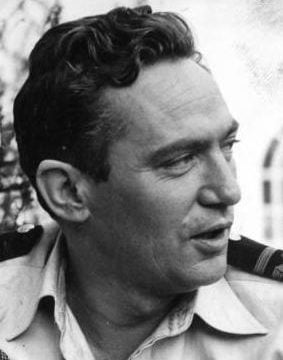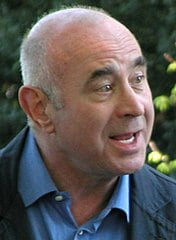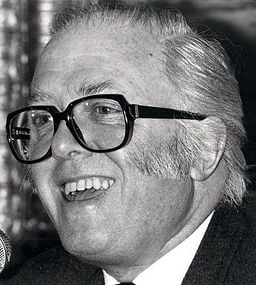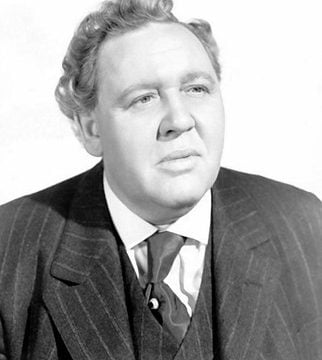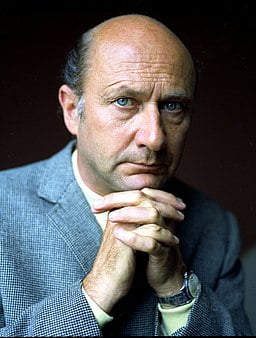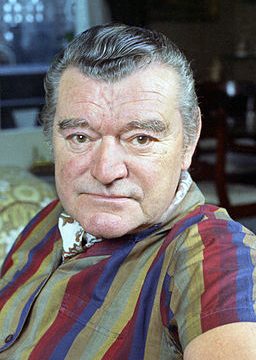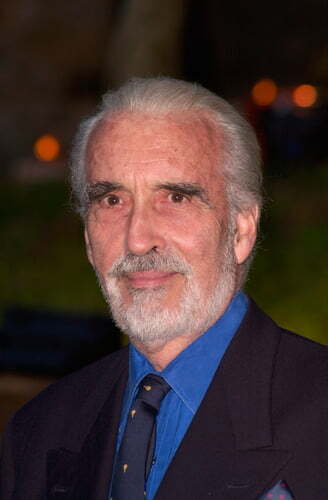
Early Life
Christopher Lee was born on 27 May 1922 in Belgravia, London. He was the son of Lieutenant Colonel Geoffrey Trollope Lee, and his wife, Countess Estelle Marie (née Carandini di Sarzano), who was born into Italian nobility. He had a sister, Xandra, who was 5 years older. Lee’s parents separated when he was four and divorced two years later. His mother then married Harcourt George St-Croix Rose, a banker, and uncle to the young Ian Fleming.
Lee began his education at Wagner’s private school in Queen’s Gate. Aged 9, he was then sent to Summer Fields School, a preparatory school in Oxford. After 5 years, he moved to Wellington College to complete his education. Lee finished his schooling in 1939, aged 17. It was a year earlier than he had expected, due to the fact his step-father had gone bankrupt. With few employment prospects, Lee travelled around Europe for a while. He just happened to be in Paris to witness the guillotining of Eugene Weidmann – France’s last public execution. With Europe now on the brink of war, Lee decided it wise to return home.
World War II
Back in the UK, Lee found work as an office clerk for a London shipping company. Later, he worked as a switchboard operator for Beecham and joined the Home Guard. In 1941, he volunteered to join the Royal Air Force. After passing initial exams in England, he was sent to Southern Rhodesia for pilot training. However, he ultimately failed to qualify as a pilot on medical grounds.
Lee then applied to join the RAF Intelligence unit. His new role saw him spend much of the rest of the war in North Africa. By the end of WW2, Lee was fluent, amongst others, in French, Italian, Spanish, and German. His language skills saw him secure a position with the Central Registry of War Criminals and Security Suspects – the organisation tasked with tracking down Nazi war criminals. He demobbed from the RAF in 1946 at the rank of flight lieutenant.
Early Career
After leaving the military, Lee was perturbed about the direction of his future career. His cousin Nicolò Carandini, then serving as Italian Ambassador to Britain, suggested, “Why not become an actor, Christopher?”. Lee followed through on the idea but initially found it difficult to find work. At 6’ 5’’ in height, he was often told he was too tall to be an actor. Nevertheless, he persevered and made his film debut in the Gothic romance Corridor of Mirrors (1948). He next made a bit-part appearance in Laurence Olivier’s Hamlet (1948), in which Peter Cushing was also cast. He went on to make appearances in eight films in his first year as an actor.
With 40 films under his belt, it was almost a decade before Lee’s big breakthrough came. That’s when he was cast as the monster in Hammer’s The Curse of Frankenstein (1957). It was the first film in which he co-starred with Peter Cushing, who played Baron Victor Frankenstein. They ultimately would partner up in more than twenty films and become close friends. His screen success as Frankenstein’s monster led to him being cast in the titular role in Dracula (1958). He would reprise the role another half dozen times for Hammer Productions and a further three in independent films. Lee extended his acting range in The Hound of the Baskervilles (1959), when he starred as Sir Henry Baskerville, opposite Peter Cushing’s Sherlock Holmes.
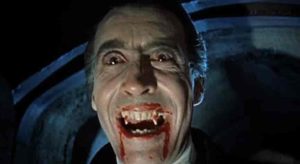
Christopher Lee in one of his most iconic roles – Dracula (1958). Image credit: Creative Commons/ (Public Domain Mark 1.0)
The ’60s and ’70s
Lee played Holmes himself in Sherlock Holmes and the Deadly Necklace (1962). Lee then starred in the German film The Puzzle of the Red Orchid (1962). The film’s dialogue was spoken entirely in German. He also starred in another film franchise when he took on the role of Dr. Fu Manchu in The Face of Fu Manchu (1965). He would reprieve the supervillain character a further four times on the big screen. In 1966, Lee starred in the titular role in Rasputin, the Mad Monk.
In 1973, Lee starred as Lord Summerisle in the British folk horror film The Wicker Man (1973). The film, also starring Edward Woodward and Britt Ekland was moderately well-received but has since become a cult classic. In 2004, Total Film magazine declared The Wicker Man, the 6th greatest British film of all time. Lee agreed with the sentiment, so keen on the low-budget film being made, he worked for free. Later, Lee stated that it was his best film.
Lee next appeared as the Comte de Rochefort in The Three Musketeers (1973). He played the role again in The Four Musketeers (1974) and a third time in The Return of the Musketeers (1989). The following year, he played the James Bond villain Scaramanga in The Man with the Golden Gun (1974). It is one of the non-horror roles for which he is best remembered. In 1977, Lee decided to move from the UK to Hollywood. His first appearance there was in the disaster film Airport ’77 (1977), which also starred James Stewart, Jack Lemon, and Olivia de Havilland.
Later Career
Throughout the ’80s and ’90s, workhorse Lee made a further 38 films. In 2001, now aged almost 80, Lee’s career took an unexpected major upturn when he was cast as the wizard Saruman in Peter Jackson’s film trilogy The Lord of the Rings. His appearance in The Fellowship of the Ring (2001), The Two Towers (2002), and Return of the King (2003) brought him a whole new legion of younger fans. The role was revived in The Hobbit: An Unexpected Journey (2012) and The Hobbit: The Battle of the Five Armies (2014). Based on his strong performance as Suramen, George Lucas cast him as Count Dooku in the Star Wars movies Attack of the Clones (2002) and Revenge of the Sith (2005).
Other notable films in which Lee was cast post-2000 include the Tim Burton films Charlie and the Chocolate Factory (2005) and Alice in Wonderland (2010), and Martin Scorsese’s historical fantasy Hugo (2011). As it turned out, Lee’s final screen performance was in the second Hobbit film in 2014. However, he also provided the voice of God Angels in Notting Hill (2015) and narrated The Hunting of the Snark (2017), both released posthumously. Lee’s big screen appearances came to the colossal total of 212 films. In addition, he also managed 66 television credits, the last being a posthumous narration of The Time War (2018).
In addition to movies and TV, Lee also had a singing career and a considerable catalogue of voice work for films and video games.
Personal Life
Lee married the former Danish model Birgit “Gitte” Krøncke in March 1961. The couple remained wed until Lee’s death in 2015. Their daughter, Christina Erika Carandini Lee, was born in 1963.
Lee received a number of honours during his lifetime. In 2008, he was featured on a commemorative UK postage stamp in the guise of Dracula to mark 50 years since the release of the Dracula (1958) film. In 2009, he was knighted for his services to drama and charity. He received a BAFTA Fellowship in 2011, and a BFI Fellowship, two years later.
Lee penned a number of books, including an autobiography, “Tall, Dark, and Gruesome” (1977). The book was re-released in 2003 under the title “Lord of Misrule”.
Illness and Death
Lee was admitted to Chelsea and Westminster Hospital with respiratory problems and heart failure shortly after his 93rd birthday. He died in hospital shortly afterwards on 7 June 2015. His wife waited 4 days to make the news public, which was only after all family and friends had been personally informed. He was cremated and his ashes were scattered in Surrey Hills in the South of England.
Header image Credit: Featureflash Photo Agency/Shutterstock.com
